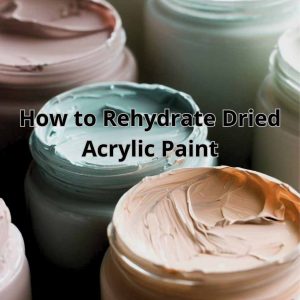Are you an artist eager to bring your creative visions to life on canvas? If so, you’ve likely encountered the question of how to prime a canvas without gesso. Priming, the essential first step in the artistic process, sets the foundation for your artwork’s success.
However, traditional methods using gesso may not always align with your needs. That’s where this guide comes in, offering you an alternative approach to canvas priming that breaks free from the confines of conventional wisdom.
In this comprehensive exploration, we will dive into the world of priming without gesso, unveiling the benefits, considerations, and step-by-step techniques to help you unlock new artistic possibilities.
Get ready to discover the untapped potential of priming without gesso and embark on a journey of innovation and creativity.
What is canvas priming?
Canvas priming is the process of preparing the surface of a canvas before applying paint. It involves applying a preparatory layer, known as a primer, which serves several important purposes in the creation of artwork.

The purpose of priming
The primary purpose of priming is to create a suitable surface for paint application. When a canvas is left unprimed, the paint can be absorbed too quickly, leading to dull and uneven colors.
Additionally, the canvas fabric itself may deteriorate over time if not protected by a primer. By priming the canvas, you create a barrier that prevents the paint from directly interacting with the fabric and ensures better adhesion.
Advantages of priming without gesso

Traditionally, gesso has been the most commonly used primer for canvas. It is a mixture of a binder, such as acrylic polymer or rabbit skin glue, and a white pigment, typically titanium dioxide.
Gesso provides a smooth, slightly textured surface that enhances paint adhesion and prevents the paint from sinking into the canvas.
However, there are advantages to priming without gesso. One advantage is cost-effectiveness. Gesso can be expensive, especially if you have a large canvas or require multiple layers.
By exploring alternative priming methods, you can find more affordable options without compromising the quality of your artwork.
Another advantage of priming without gesso is the opportunity for customization. Alternative primers, such as acrylic mediums or acrylic binders, offer different textures, finishes, and effects.
For instance, using an acrylic medium as a primer can result in a smoother surface with fewer teeth, which may be desirable for certain painting styles or techniques.
Preparing the Canvas
Unprimed canvas vs. pre-primed canvas


When exploring priming options without gesso, you have the choice between unprimed canvas and pre-primed canvas. Unprimed canvas provides a blank slate for customization, allowing you to fully control the priming process.
Pre-primed canvas, on the other hand, comes with a factory-applied primer layer, which may or may not be suitable for your specific needs.
Preparing the canvas for priming
Before applying any primer, it’s important to prepare the canvas properly.
- Begin by cleaning the canvas surface using a lint-free cloth or soft brush to remove any dust or debris.
- This step ensures a smooth and clean surface for priming.
- Additionally, inspect the canvas for any loose threads or imperfections, gently trimming or repairing them as needed.
Alternatives to Gesso
While gesso is a popular choice for priming, there are several alternative materials that can serve as effective primers. Explore these options to find the one that best suits your artistic needs:
Acrylic Mediums for Priming
Acrylic mediums, such as matte or gel mediums, can be used as alternatives to gesso. These mediums not only prime the canvas but also provide additional benefits such as texture manipulation, transparency control, and extended drying time. Experiment with different mediums to achieve the desired effect for your artwork.
For example, let’s say you’re a landscape artist who wants to create a painting with rich texture and depth. By using a gel medium as a primer, you can achieve a thick, impasto-like texture that enhances the visual impact of your artwork.
Look for reputable art supply brands that offer a range of acrylic mediums. Some popular brands include Liquitex, Golden, and Winsor & Newton.
Acrylic Binder as a Primer
Acrylic binder, a clear, adhesive substance, can also be used as a primer. It creates a smooth, glossy surface that enhances paint adhesion. This option is particularly suitable for artists who prefer a glossy finish or work with transparent layers.
Suppose you’re a portrait artist working on a realistic portrait painting. Using acrylic binder as a primer can provide a smooth surface that allows for precise brushwork and detailed rendering.
Similar to acrylic mediums, look for high-quality brands that specialize in acrylic paints and mediums. Again, brands like Liquitex, Golden, Winsor & Newton and PEBEO offer acrylic binders that can be used as primers.
Latex-Based Primers
Latex-based primers, commonly used for house painting, can be surprisingly effective as canvas primers. They provide a smooth surface, excellent adhesion, and moisture resistance.
However, it’s important to note that latex-based primers may create a slightly different texture compared to gesso or other alternatives.
Imagine you’re a mixed-media artist who enjoys incorporating different materials and techniques into your artwork. Using a latex-based primer allows you to work with various media, such as acrylic paints, watercolors, or even collage elements.
For latex-based primers, you can explore well-known brands that produce house paints. Brands like Behr, Sherwin-Williams, Benjamin Moore, or Rust-Oleum are commonly recommended for their quality latex-based primers.
White House Paint as a Primer

Believe it or not, ordinary white house paint can serve as a viable alternative primer for your canvas. This option is especially useful if you’re looking for a cost-effective solution or wish to experiment with different textures.
Keep in mind that house paint may have a higher viscosity and may require thinning or multiple layers for optimal results.
For instance, let’s say you’re a contemporary artist exploring abstract expressionism. By using white house paint as a primer, you can achieve a raw, gritty texture that adds an element of spontaneity and energy to your artwork.
Similarly, for white house paint as a primer, you can explore reputable brands known for their interior or exterior house paints. Consider brands like Behr, Sherwin-Williams, Benjamin Moore, or Valspar.
How to Prime a Canvas Without Gesso: Step-by-Step Guide
Choosing the appropriate alternative primer
Select the alternative primer that aligns with your artistic vision and preferences. Consider the desired texture, absorbency, and compatibility with the type of paint you’ll be using.
Applying the first layer
If necessary, mix the alternative primer according to the manufacturer’s instructions. Use a palette knife or stir stick to achieve a smooth and consistent mixture.


Then, select the appropriate tools for applying the primer such as a brush, roller, or palette knife.
Apply an even layer of the primer onto the canvas surface, working in long, sweeping motions. Ensure full coverage, paying attention to corners and edges. Avoid excessive buildup or pooling of the primer.
Drying and sanding
Allow the primer to dry completely according to the manufacturer’s recommended drying time. This may take several hours or overnight, depending on the primer used. Once dry, lightly sand the surface using fine-grit sandpaper to achieve a smooth and uniform texture.
Applying subsequent layers (if needed)
Evaluate the coverage and texture of the first layer. If desired, apply additional layers of the alternative primer to achieve the desired effect.
Allow each layer to dry completely before applying the next. Building up layers can enhance the absorbency and texture of the canvas.
Tips for Priming Success
To ensure successful priming without gesso, consider the following tips:
- Ensuring Proper Ventilation: Work in a well-ventilated area or outdoors to avoid inhalation of fumes from the primer. Proper ventilation also helps with the drying process.
- Avoiding Over-application of Primer: Apply the primer in thin, even layers to prevent excessive buildup or cracking. Multiple thin layers are often preferable to a single thick layer.
- Working in a Dust-Free Environment: Minimize dust particles by working in a clean and dust-free environment. This prevents unwanted particles from settling onto the wet primer and compromising the surface quality.
- Using High-Quality Materials and Tools: Invest in high-quality alternative primers, brushes, rollers, or palette knives to ensure optimal results. Quality materials and tools contribute to the overall longevity and appearance of your artwork.
- Experimenting with Different Techniques: Don’t be afraid to experiment with various priming techniques. Try different alternative primers, application methods, and layering techniques to discover unique effects that resonate with your artistic style.
Troubleshooting
- Dealing with Brush or Roller Marks: If you encounter brush or roller marks on the primed surface, lightly sand the affected areas and reapply a thin layer of primer using a different tool or technique.
- Addressing Uneven Coverage: Uneven coverage can be remedied by applying additional layers of the alternative primer. Ensure each layer is applied evenly and dries completely before adding the next.
- Fixing Bubbles or Air Pockets: If bubbles or air pockets appear during the priming process, gently puncture them with a pin or needle. Smooth the area with a brush or roller to blend it seamlessly with the surrounding surface.
- Correcting Excessive Texture: If you find the texture of the primed surface too rough or uneven, sand the canvas lightly with a fine-grit sandpaper. This will help create a smoother surface for your artwork.
FAQs
- Can I apply paint directly on a canvas without priming it with gesso or alternative primers?
While it’s possible to paint directly on an unprimed canvas, it is generally recommended to prime the canvas with gesso or alternative primers. Priming creates a barrier between the canvas and the paint, improving paint adhesion and preventing the paint from being absorbed into the canvas fibers.
- Does priming a canvas without gesso affect the archival quality of the artwork?
Priming a canvas without gesso can potentially affect the archival quality of the artwork. Gesso serves as a protective layer that helps prevent the paint from deteriorating over time and maintains the longevity of the artwork. Using alternative primers that are specifically designed for archival purposes can help maintain the artwork’s archival quality.
- Can I remove the alternative primer from the canvas if I make a mistake?
The ability to remove alternative primers from a canvas depends on the specific product used. Some alternative primers may be removable, while others may be permanent. It’s recommended to test a small area or follow the manufacturer’s instructions to determine if the alternative primer can be successfully removed without damaging the canvas.
- Can I use alternative primers for other art projects besides canvas painting?
Yes, alternative primers can be used for various art projects beyond canvas painting. They can be applied to different painting surfaces such as wood panels, cardboard, or other substrates commonly used in art. Alternative primers provide a versatile option for priming surfaces in mixed media artwork, DIY crafts, or any project requiring a suitable painting surface.
- Can I combine gesso and alternative primers in my canvas priming process?
Yes, it is possible to combine gesso and alternative primers in the canvas priming process. This combination allows artists to experiment with different textures and effects. Applying a layer of gesso followed by alternative primers can create a unique surface for painting, offering both the benefits of traditional gesso and the customization options of alternative primers.
Wrapping Up
As we reach the final brushstroke of this artistic journey, it’s time to reflect on the transformative power of priming a canvas without gesso.
Throughout this blog post, we’ve explored the problem artists face when seeking alternatives to traditional priming methods. We’ve presented the ultimate solution that unlocks a world of creative possibilities.
By learning how to prime a canvas without gesso, you’ve discovered a realm of alternative primers, from acrylic mediums to latex-based options. You’ve embraced the freedom to experiment, customize, and achieve unique textures in your artwork.
As we conclude this journey, remember the importance of finding the method that resonates with your artistic vision and needs. So go forth, fellow artists, armed with the knowledge to create captivating masterpieces on primed canvases.




